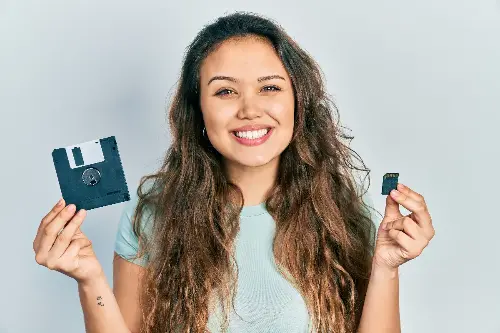In the annals of technological history, the unassuming floppy disk stands out as a cornerstone of digital storage, whose impact is still felt in modern data-driven societies. Despite its relative obscurity today, the floppy disk's influence on the evolution of personal computing and data storage cannot be overstated. This once-ubiquitous medium laid the foundations for the plethora of digital storage solutions we currently take for granted.

From Storage Revolution to Relic
Floppy disks first made an appearance in the late 1960s, gradually morphing from the 8-inch behemoths of the IBM era to the sleek 3.5-inch disks encased in rigid plastic. These small, portable storage solutions democratised the saving and sharing of digital information, facilitating a revolution that would usher in the age of personal computing. In an era dominated by enormous, expensive, and inaccessible mainframes, the floppy disk was a symbol of liberating innovation, providing individuals with an unprecedented level of control over their data.
The compact size and affordability of floppy disks made them an instant hit. Entire software programs, documents, games, and more could be distributed quickly and efficiently. The rise of the home computer in the 1980s was, in many ways, facilitated by the availability and practicality of floppy disks, which became the go-to method for software installation and data transfer.
Catalyst for Modern Data Mobility
The portability of floppy disks essentially provided the blueprint for contemporary mobile storage devices like USB flash drives, SD cards, and cloud services. It paved the way for concepts like data portability, the freedom to work from different locations, and the flexibility of sharing files with others. The process of exchanging information between computers via these small, flat disks trained a generation of consumers in the fundamentals of file management and data transport—practices that are omnipresent in today's digital environment.
Although many modern users may never have encountered a floppy disk firsthand, the format's legacy is embedded in the iconography of computing—the classic 'save' icon represented in countless software interfaces bears the unmistakable silhouette of a floppy disk.

A Foundation for Software and Gaming Industries
The widespread adoption of floppy disks gave rise to the software and gaming industries as we know them. Video games, in particular, benefitted greatly from the distribution capabilities of floppies, allowing small developers to put their creations into the hands of a burgeoning audience with ease. Hits like "The Oregon Trail" and "Doom" were disseminated on floppy disks, capturing imaginations and setting the stage for the explosive growth of gaming culture.
Software distribution also hinged on the floppy's practicality, with companies like Microsoft and Apple utilising the medium to disseminate their operating systems and application software. The method by which we install and run applications today owes much to the floppy disk - the concept of external installation media is just one contemporary descendant of the diskette's physical software distribution.
Influence on Contemporary Design and Functionality
Even as the floppy disk itself has become technologically obsolete, replaced by vastly superior solutions in terms of capacity and convenience, its fundamental design has had lasting influence. The notion of 'drag and drop', so central to graphical user interfaces today, was honed during the age of the floppy disk. Users learnt the rudiments of data organisation—creating folders, naming files, copying and pasting—through the medium of floppy disks, creating filing systems that are echoed in today's desktop environments.
The resilience of the floppy disk in challenging environments and its reusability also laid down expectations for what users could demand from their storage solutions. Durability and the ability to write, overwrite, and erase data without significant wear and tear are features that consumers came to expect, features that engineers continue to refine in the storage technologies we use today.

As we reflect on the floppy disk's pivotal role in shaping our digital landscape, it's evident that this iconic medium was more than just a temporary storage solution; it was a fundamental building block of personal computing, software distribution, and data management practices. While today's storage devices have dwarfed the floppy in capacity and speed, it remains a symbol of innovation and accessibility in technology. The floppy disk's legacy is a testament to the remarkable impact that even the most unassuming tools can have on the course of human progress. Indeed, every click of the 'save' icon serves as a subtle tribute to the floppy disk's far-reaching influence in our digital world.
